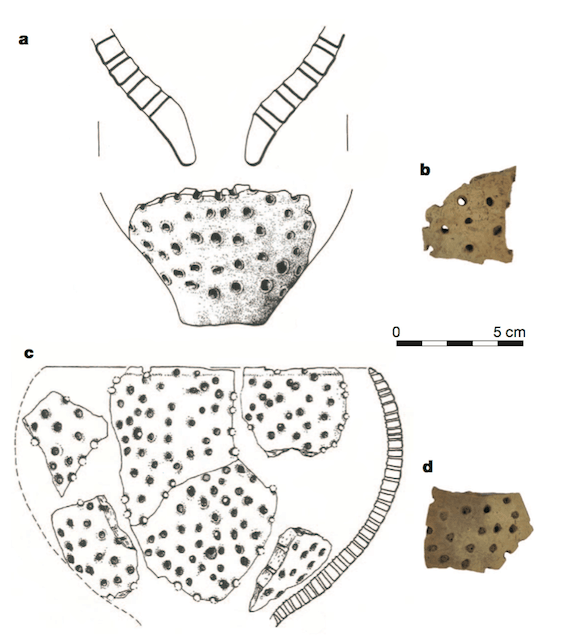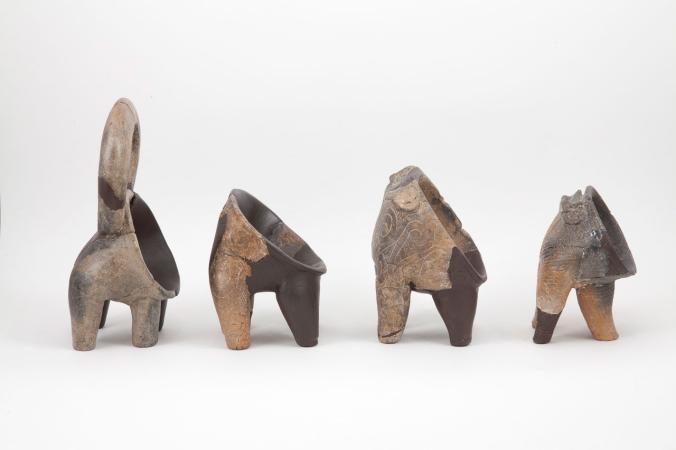Cheese is one of the most popular foods in the world and also one of the tastiest. According to scientists, cheese is delicious because the bacteria needed to turn dairy into cheese creates a large number of flavor molecules. It is similar to the fermentation process of alcohol, which also creates many interesting flavors.
Archaeological research shows that our love for cheese is nothing new and that people have been making cheese for about 7,500 years. Several pottery shards from this time period have shown trace amounts of processed dairy that is believed to be early cheese. The oldest pieces of cheese ever discovered are over 3,000 years old and were well preserved in desert tombs. While this ancient cheese is inedible, the oldest edible cheese on the market today can be aged for up to 18 years!
6. Bitto Storico
Age: 10 – 18 years
Country of Origin: Valtellina Valley, Lombardy, Italy
Derived From: Cow and goat milk

Bitto Storico may not be an ancient cheese like the others on this list, but it is promoted as being the world’s oldest edible cheese. These cheese from the Valtellina Valley in Italy can be aged for up to 18 years, which is significantly longer than any other cheese on the market. However, most Bitto Storico for sale is between 5 – 10 years old.
A 15 year old Bitto was sold in China for $6,400.
Since Bitto Storico is made with a combination of cow and goat milk, it is able to be aged for much longer. Bitto typically contains about 10-20% goat milk. There are only 12 producers of Bitto Storico in Italy today.
5. Oldest Edible Cheddar
Age: 40 years (c.1972)
Country of Origin: Oconto, Wisonsin, USA
Derived From: Cow milk

In 2012, news reports surfaced that a man from Wisconsin was selling 40 year old cheddar he had found in the back of the cooler at his cheese shop in the town of Oconto. The owner/creator of the cheddar Ed Zahn didn’t know the cheddar existed until he was cleaning out his shop, which has now been closed. Zahn also found 34 year old and 28 year old cheddar he had forgot about.
After his discovery, Zahn was quietly selling pieces of the old cheese to locals. Then he contacted Ken McNulty, the owner of the Wisconsin Cheese Mart in Milwaukee and asked if he was interested in buying the rest of the cheese. The 40 year old cheese eventually sold out and the people who tried it said it was actually delicious. Pieces of the remaining 28 year old cheese were put up for sale on Cheese Mart’s website.
4. Ancient Egyptian Cheese
Age: over 3,000 years (c.13th century BCE)
Country of Origin: Saqqara necropolis, near Cairo, Egypt
Derived From: Sheep and goat milk

Recently, another discovery was made claiming that the world’s oldest cheese had been found in Egypt. While this cheese isn’t the oldest in the world, it is the oldest ever discovered from Ancient Egypt. The cheese, which was described as “solidified whitish mass”, was found jars from the tomb of Ptahmes, a high-ranking Ancient Egyptian official from the 13th century BCE.
Analysis revealed that the cheese was made from sheep and goat milk. Researchers also found traces of brucellosis bacterium in the cheese. Brucellosis is an infectious disease that comes from eating unpasteurized milk or undercooked meat from goats and sheep. This is believed to be the oldest evidence of the disease, which still exists today.
3. Ancient Chinese Cheese
Age: over 3,600 years (c.1615 BCE)
Country of Origin: Taklamakan Desert, Xinjiang, China
Derived From: Kefir dairy (most likely made with cow milk)

Although there are older traces of cheese from pottery, chunks of yellowish substance found with mummies from China’s Taklamakan Desert are currently the oldest pieces of cheese ever discovered. According to researchers, the cheese was probably buried with the mummies to be used as a snack for the afterlife. The cheese was found in several tombs, around the necks and chests of the mummies.
Chemical analysis shows that this cheese was not made from animal enzymes like rennet. Instead, it was made with microbes such as Lactobacillus and Saccharomycetaceae yeasts, which are found in the fermented dairy drink known as kefir. The presence of this early kefir dairy may explain why herding and milking spread through Eurasia even though the people from this area are largely lactose intolerant.
2. Ancient Polish Cheese
Age: over 7,000 years (c.5000 BCE)
Country of Origin: Poland
Derived From: Cow milk

In 2012, a scientific paper was released discussing the discovery of what is believed to be some of the earliest evidence of cheese making. A new analysis was conducted on 7,000 year old pottery shards from Poland. The pottery shards had holes in them that look very similar to modern cheese strainers.
Researchers tested the residue around the holes and discovered trace amounts of fats that are present in dairy products. They also analyzed other pottery shards from the site and found fats from cow carcasses. The ancient people of the area probably used the non-perforated bowls to store their curds or whey.
1. Ancient Mediterranean Cheese
Age: about 7,200 years (c.5200 BCE)
Country of Origin: Dalmatian coast of Croatia
Derived From: Cow milk

A recent study from September 2018, provided evidence for what is believed to be the oldest cheese in the world. The research revealed that the Neolithic people from the Dalmatian coast of Croatia may have been making cheese over 7,200 years ago. Like many of the earliest traces of cheese, scientists found dairy remains on ancient pottery shards. Some of the pottery shards including sieves, similar to ones found at other Neolithic sites, that were most likely used to strain the curds from the whey.
While the scientists who published the paper believe that the pottery shows definitive evidence of cheese there has been some push back from others in the scientific community. According to one skeptical scientists, the fat traces may have just been from a meat mixture and not dairy.
OTHER POSTS YOU MAY BE INTERESTED IN











